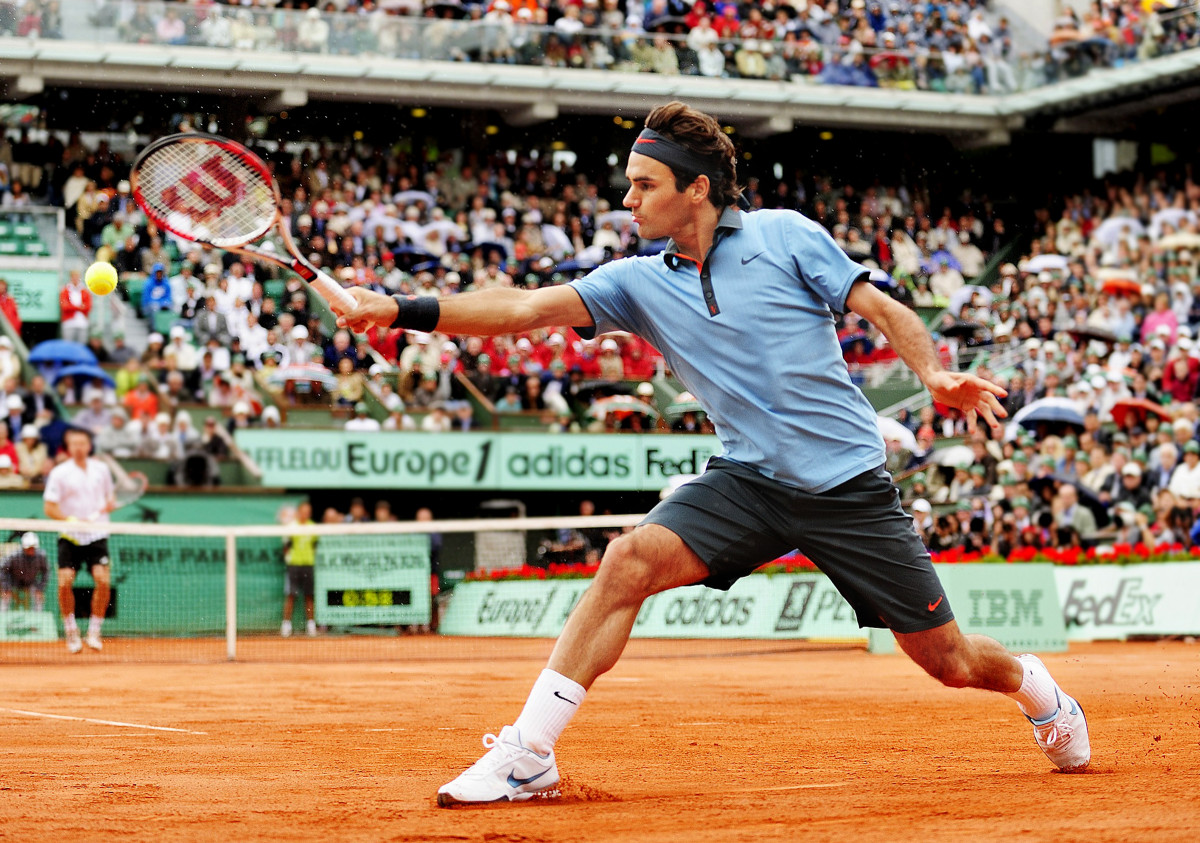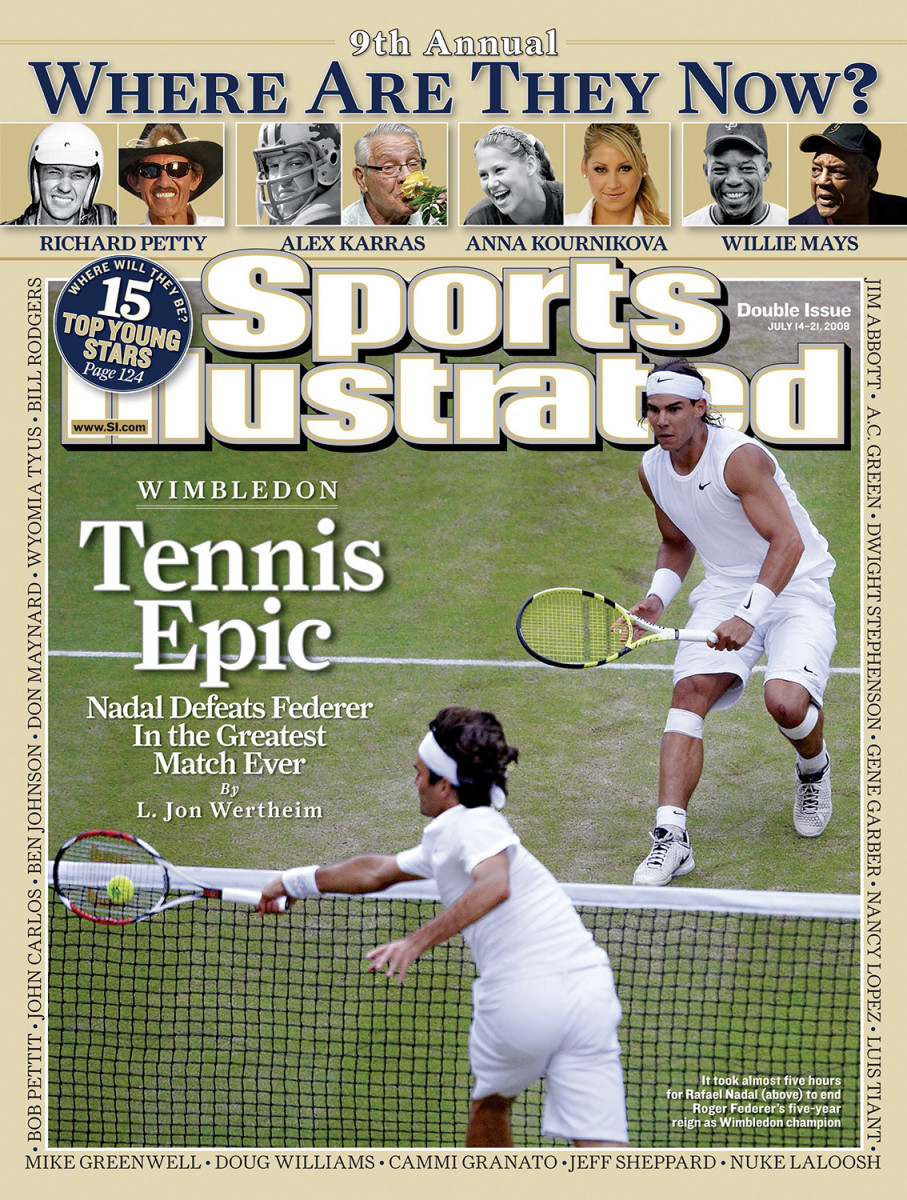Roger Federer Leaves Behind Distinct, Beautiful Mark on Tennis
The country of Switzerland is flush with fountains. But you are unlikely ever to see people throwing coins into one. A tradition virtually everywhere else in the world, this ritual never caught on in Switzerland for a simple reason. There’s no need to wish for good luck when you already have it. As one native son put it, “Only the poor have to hope.”
This theme of abundance and extravagance—and recognition of good fortune—echoed through the career of Switzerland’s most towering athlete. Roger Federer, who announced his retirement from tennis Thursday at the age of 41, always seemed to have plenty. Plenty of charm. Plenty of time. Plenty of decency. Of course, plenty of talent.
Federer was kissed by the tennis gods, his talent so extravagant that it was obvious to the vast army of casual fans, whom he turned into his fans. Gliding around the court without sound or sweat, Federer performed tennis more than he played tennis; and he did so, at once, with a brutal economy and a wealth of flair. He possessed every shot in the book—and authored a good many original editions. There was the flicking forehand on the run. There were craftily angled volleys, in defiance of physics. There was this, perhaps the single purest shot ever hit. Federer, more than any player, reminded us why a batted tennis ball is known as “a stroke.”

It took a few years for the machine to purr. Initially, Federer was a flashy prospect with so many options at his disposal it was confounding. It didn’t help that Federer was, by his own admission, a hothead, prone to showing his frustration with his unfulfilled potential. But, at age 21, he broke through at the 17th major he entered, Wimbledon 2003. And after taking the title with characteristically genius tennis and then dissolving into tears—another Federer trademark. “It’s so great,” he said through tears.
Then, the spigot was tapped. Federer started winning almost as a matter of ritual. He would win on grass, on concrete and on clay. He would win at the baseline and at the net. He would win with expert serving some days; with expert returning the next. He would win on all continents and in all conditions. Most of all, he would win at the majors, tennis’s four coins of the realm. There were 16 majors held between 2004 and 2007. Federer won 11 of them.
If his matches weren’t especially suspenseful, the mystery came in how his greatness would reveal itself. What bit of sorcery would he impart on an opponent, who sometimes seemed less an adversary than a partner in a performance? The hothead had been replaced, not by a clinical coolness but by a joyous everyman who smiled a lot and, openly, admitted to loving his job. Like the guy who didn’t need to wish for luck in the fountain, Federer also thrived as the anti-bully, a sort of benevolent tennis despot. “You get up to play because he’s Roger,” James Blake once told me. “But not because you don’t like him. Everyone likes him.” Likewise, note Andy Roddick’s reaction after this Federer Moment:
And then came the great plot point of his career. A pair of rivals traipsed in to challenge his supremacy. First, charged Rafael Nadal of Spain, who was also sui generis, but otherwise was everything Federer wasn’t: left-handed, young, relentless, brutal, and above all, comfortable with the concept of rivalry. Nadal liked Federer; but that did not impede his desire to beat him. Which he did most times they played.
At first this was jarring to Federer. “I didn’t want to have a rival,” Federer told me in 2018. “I just wanted to be the best and there was the rest basically. That's how I saw it. … And then when Rafa came onto the scene, I guess at first I had to also appreciate the rival, that he’s going to be around. And maybe I had to adjust my game towards him. So, you had to accept that.”
No sooner had Federer learned to embrace rivalry—liking Nadal but also wanting to beat him—than came Novak Djokovic. An ambitious Serb whose game simply lacked weakness, Djokovic began as ankle-biter, an annoyance. But he tended to play his best tennis against Federer, often snatching victory from defeat on the biggest stages. Multiple times in majors, Federer was a single point from victory against Djokovic and couldn’t close.
So began the great GOAT rodeo, tennis’s derby to become the greatest of all time in the men’s game. Once thought to be impregnable, Federer’s supremacy was suddenly the topic for debate. Not least because he was chased (and chaste), he kept adding to his total. In 2017, closer to age 40 than to 30—he won his 18th and 19th majors and then in ’18 added a 20th, among the record 103 overall titles he would win. He would spend 310 weeks at No. 1, also a record. Then the pursuing. Djokovic has raised his total to 21. Nadal 22. And while the latter has injury problems of his own, neither seems to be done stacking trophies.

Yet there are other factors in “greatness” that are incalculable. Federer’s real abundance? It was a generosity of spirit. In his seminal essay, “Roger Federer as Religious Experience,” the late author David Foster Wallace wrote about “Federer Moments.” Wallace was referring to those bits of abracadabra shotmaking when “the jaw drops and eyes protrude and sounds are made that bring spouses in from other rooms to see if you’re O.K.”
But to those of us who travel the tennis caravan, “Federer Moments” came to mean something else entirely. Those were those intervals—and there were many—when he showed character to match his athletic excellence. Here was an athlete who experienced dizzying heights, who never developed a hardened exterior, who never looked through people.
Federer once conducted a lengthy interview, realized that the journalist’s recording device had malfunctioned and volunteered, “Let’s do it again!” There were times he entered the locker room and introduced himself to young players and little-known qualifiers, asking about their background and the correct pronunciations of their names, effectively welcoming them to the workforce. If you wanted to make a retirement video for a tennis cameraman or racket stringer, Federer was your man. He might not have known the guy personally, but he was aware of the vital role he played. As a matter of routine, Federer left courtesy drivers tickets to his matches and bought the ballkids pizza. What might be the most benign catchphrase for an athlete ever to adopt, Federer often said, “It’s nice to be important but it’s more important to be nice.”
Federer brought joy to the workplace. He brought his family, too. His parents were regular fixtures, quick to praise opponents and as mystified by the son’s genius as the rest of us. His wife, Mirka, herself a former player, was a fixture, too. So were their four kids. It was all a suggestion that tennis was not this brutalist hellscape as it’s too often portrayed.
By playing into his 40s—a full decade later than Pete Sampras did—Federer revealed that, yes, he had grace but he also had another “gr” word, grit. His genius was undeniable. But so was his willingness to wring it all out. Beyond the he-did-NOT-just-do-that shot, it was this acknowledgement of good fortune, this insistence on honoring his gifts, that made him so likable to millions.
It’s no wonder why, to Federer, every match he played the world over seemed like a home game. It’s no wonder why companies tripped over themselves to associate their cars and coffeemakers and pasta with him. (Despite earning “only” $130 million or so in prize money, he is, by most accounts, a billionaire.) No wonder why there is hope that the competition he founded, the Laver Cup, will continue to thrive in his retirement.
Roger Federer gripped a racket. For more than two decades he gripped the entire sport as well.
More Roger Federer Coverage:
